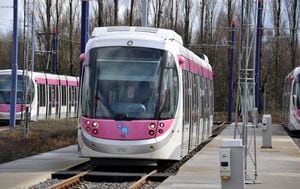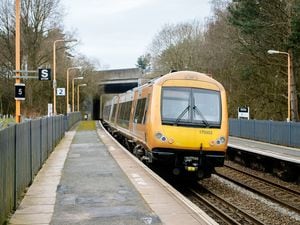Battery-powered Midland Metro tram - how does it work?
It looks and moves like a typical Midland Metro tram

But this battery-powered tram can operate without the need for overhead power cables.
It means there is not always the need for overhanging wires tied to the tops of city centre buildings.
And it will soon be seen in Wolverhampton.
Midland Metro want to use the technology so overhead cables are not needed on the Wolverhampton extension, to the city's railway station.
Transport Secretary Chris Grayling boarded a tram being tested at the Wednesbury depot yesterday.
He also drove the tram, along with West Midland Mayor Andy Street.
Mr Street said: "The benefit here is its just as smooth but what it means is you don't have to have the overhead cables in certain areas of tracks.
"It is the first one in the county and it is great Midland Metro is leading the way."
The tram is still being tested, but is set to be rolled out in time for the Wolverhampton extension in two years.
The lithium batteries inside the tram are charged up by the overhead lines before being able to solely supply power its movement.
They were fitted in a factory in Zaragoza in Spain.
They will eventually be used on the Metro's entire fleet of trams, at a cost of £15.5m.
However, the technology will save £9.24m in not putting up overhead lines.
Other sections of the Metro not to get the overhead lines include the Birmingham Centenary Square extension, including through Victoria Square.
The Wednesbury to Brierley Hill extension is also being evaluated to identify overhead cable-free sections.





